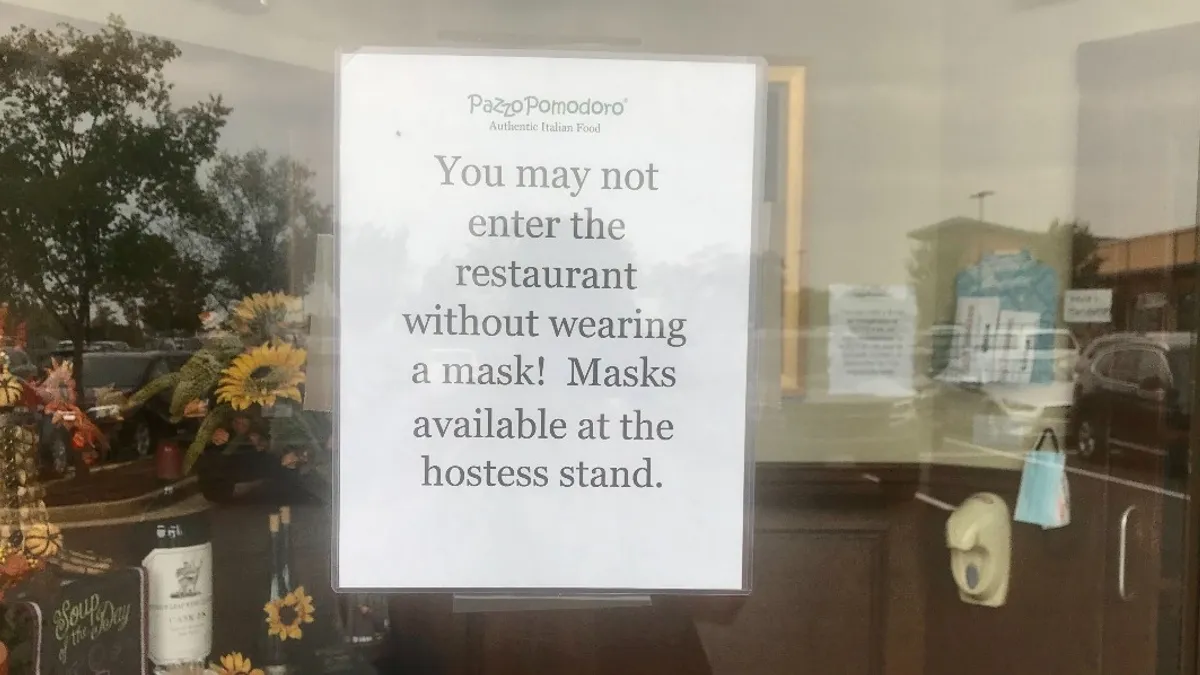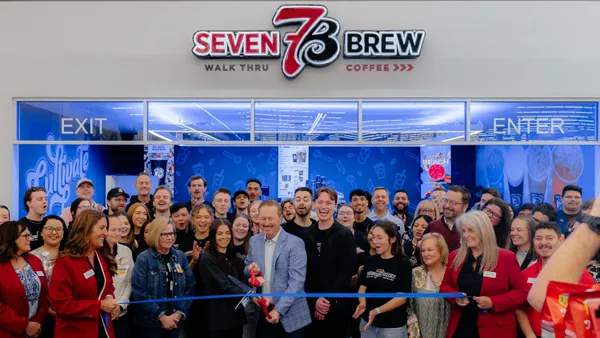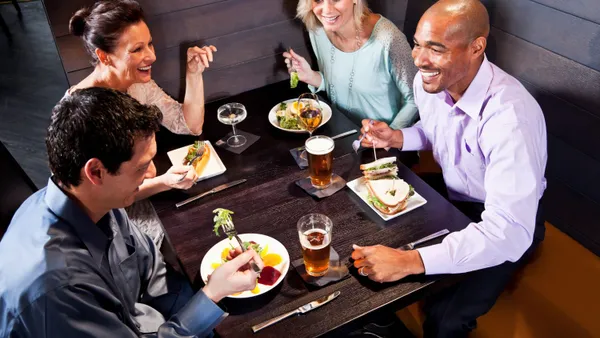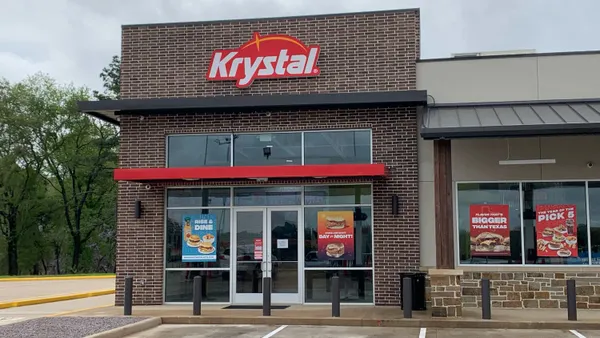Dive Brief:
- Fifty-five percent of small businesses said they have concerns about staying open long term under social distancing regulations that limit business capacity, according to Verizon Business' latest Small Business Recovery Survey. The study, conducted by Morning Consult from Aug. 26 to Sept. 4, highlights responses from 600 small and medium businesses, including restaurants and bars, that were open or planned to reopen.
- Half of restaurants and bars said they offered new products and services to adapt to changing consumer needs and 49% said they started to deliver products differently, such as via home delivery.
- Even though a bulk of states and municipalities have allowed restaurants to reopen their dining rooms, a majority are still operating under limited capacity. The Independent Restaurant Coalition said in August that restaurants report they need nearly 60% capacity to remain open permanently.
Dive Insight:
While dining rooms were closed, restaurants quickly shifted their product mixes, turning to delivery and off-premise friendly menus and offering groceries when many products, like toilet paper, were out of stock in stores. They also added family meals to appeal to parents that were tired of cooking.
These tactics helped provide some revenue, especially for restaurants that rely on dine-in, but many restaurants have said they need their dining rooms reopened to continue functioning, especially as Paycheck Protection Program funds are already running out. Restaurants are also contending with additional costs related to personal protective equipment, cleaners and other alternations to their businesses to keep employees and customers safe, which is the top concern for the industry, according to the Verizon report.
While 57% of restaurants and bars believe they could stay open for more than six months if conditions stay the same, 31% say they can remain open for six months or less, per the report. About one in six restaurants have already closed, according to the National Restaurant Association, which expects the industry to lose $240 billion in sales by the end of the year if there is no additional relief from the government.
But local governments have shifted their views on limited capacity. Florida and Indiana have allowed dining rooms to reopen to pre-COVID capacity. Texas also increased its dining room capacity from 50% to 75% on Sept. 21. Both New York City and San Francisco allowed restaurants to reopen dining rooms at 25% capacity on Wednesday.
Outdoor dining, which has helped keep many restaurants running, has also been permanently extended in New York City and will be available year-round, and Washington, D.C., is offering grants to restaurants looking to expand outdoor dining capacity. Congress' latest COVID relief bill also includes $120 billion in funding to help restaurants, along with another round of PPP funding for companies that have been struggling the most.















